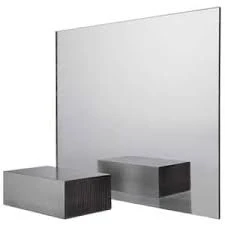

The Advantages and Applications of Low-E Glass
Low-emissivity (Low-E) glass is a revolution in the sphere of building materials, providing enhanced energy efficiency while maintaining aesthetic appeal. As energy costs continue to rise and environmental awareness grows, Low-E glass stands out as an ideal solution for architects, builders, and homeowners alike. This article delves into the characteristics, benefits, and applications of Low-E glass, shedding light on its role in modern construction.
Understanding Low-E Glass
Low-E glass has a special coating that reflects infrared energy while allowing visible light to pass through. This coating, usually made from materials such as silver, significantly reduces the amount of heat that escapes from a building, thereby enhancing thermal insulation. The primary function of Low-E glass is to minimize heat transfer, keeping indoor environments comfortable year-round.
There are different types of Low-E coatings, including passive and solar control. Passive Low-E coatings are designed to maximize solar heat gain in cooler climates, while solar control Low-E coatings reflect excess sunlight, making them more suitable for warmer conditions. This versatility makes Low-E glass a compelling choice for diverse geographic locations.
Benefits of Low-E Glass
1. Energy Efficiency One of the most significant advantages of Low-E glass is its ability to reduce energy consumption. By minimizing heat loss in the winter and reducing heat gain in the summer, Low-E glass can lead to substantial savings on heating and cooling costs. Studies have shown that buildings fitted with Low-E glass can reduce energy bills by as much as 30% to 50%.
2. Comfort Low-E glass contributes to a more comfortable indoor environment. It helps maintain a consistent temperature throughout the space, mitigating drafts and cold spots that can occur near traditional windows.
3. UV Protection Low-E glass filters out a significant portion of harmful ultraviolet (UV) rays. This feature protects furniture, flooring, and artwork from fading and damage, prolonging the life of these items.

4. Environmental Impact By improving energy efficiency, Low-E glass also reduces the overall carbon footprint of a building. Lower energy consumption directly correlates with decreased greenhouse gas emissions, aligning with global goals for environmental sustainability.
5. Aesthetic Appeal Low-E glass does not compromise visual clarity, allowing for unobstructed views while enhancing natural light infiltration. The aesthetic quality of Low-E glass makes it an attractive option for both residential and commercial properties.
Applications of Low-E Glass
The applications of Low-E glass are extensive, ranging from homes to commercial buildings, and even amidst innovative architectural designs.
1. Residential Use Homeowners frequently choose Low-E glass for window installations, patio doors, and skylights. Its energy efficiency enhances home comfort, which is particularly advantageous in regions with varying seasonal climates.
2. Commercial Properties Businesses benefit from Low-E glass in office buildings, retail spaces, and hotels. The ability to maintain comfortable indoor temperatures while reducing energy expenditures directly contributes to the bottom line.
3. Architectural Designs In modern architecture, where design aesthetics are paramount, Low-E glass is utilized in facades and curtain wall systems. The integration of Low-E glass allows architects to create stunning visuals without sacrificing energy performance and occupant comfort.
Conclusion
Low-E glass epitomizes the intersection of efficiency and design in the construction industry. Its energy-saving properties, comfort benefits, and UV protection make it indispensable in today’s environmentally-conscious world. As the demand for sustainable building solutions continues to rise, Low-E glass is likely to remain a prominent choice among builders and architects. Its ability to enhance both residential and commercial spaces while minimizing environmental impact positions Low-E glass as a key player in the future of construction and design, paving the way for smarter, energy-efficient buildings that prioritize comfort and sustainability.